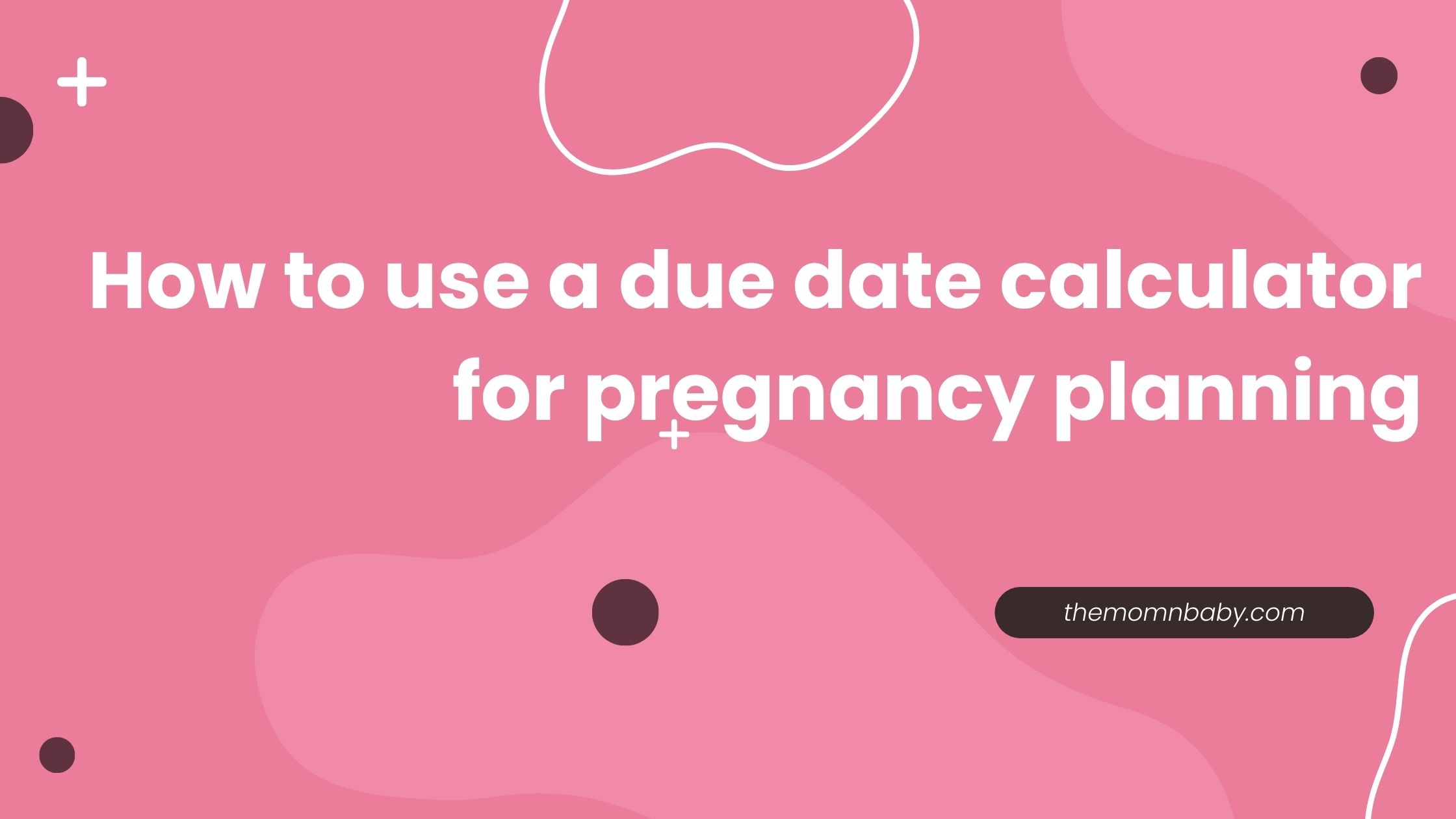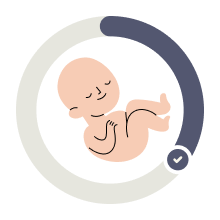As you reach 34 weeks of pregnancy, you’re approaching the final stretch, but there is still some time before your baby arrives.
It’s a crucial period to focus on completing those important tasks on your to-do list that you want to have done before your little one’s arrival. By taking care of these tasks now, you’ll be prepared and ready to go whenever your baby decides to make their grand entrance.
During your pregnancy, your healthcare provider will keep a close eye on your baby’s growth by measuring your fundal height at every visit. This process entails measuring the distance starting from your pubic bone up to the highest point of your uterus. If you have a high-risk pregnancy, your provider may use ultrasound instead to monitor your baby’s growth.
As your pregnancy progresses, you may feel exhausted and overwhelmed by the physical changes happening to your body. It’s important to remember that feeling tired of pregnancy is completely normal, and it’s okay to seek support from your loved ones or healthcare provider if you’re struggling.
If you’re employed, it’s also important to start planning for your maternity leave. This may involve talking to your company’s HR department, filling out paperwork, and creating a transition plan to ensure a smooth handover of your duties.
By taking care of these details early on, you can focus on preparing for your baby’s arrival and enjoying your time with your newborn.
Pregnancy Week 34 Quick Facts
- At 34 weeks, you’re eight months and two week pregnant
- You have 6 weeks until your due time “Calculate Your Due Date”
- This is your third trimester
Your Unborn Baby’s Size at 34 Weeks
How Big is a Baby?
When reaching the 34th week of pregnancy, the baby is approximately as big as a butternut squash. With only a little less than two months left until the due date, the baby weighs around 4.7 pounds and measures approximately 17.7 inches in length.
Pregnancy Symptoms Week 34
At 34 weeks of pregnancy, you may notice that your belly has dropped lower into your pelvis, creating more space for your lungs to expand. However, this can also increase pressure on your bladder, causing you to need to use the restroom more frequently. Although some babies do not drop until labor begins, you should be prepared for the possibility of more frequent bathroom trips in the weeks ahead.
As you near the end of your pregnancy, you may start to experience an increase in the frequency of your trips to the bathroom. This is due to the extra pressure your baby and expanding belly are putting on your bladder. You may find yourself using the restroom more frequently, especially at night.
Additionally, this pressure on your bladder can also cause a new symptom: urine leakage, Stress incontinence, which is the leakage of urine when you cough, sneeze, laugh, or engage in physical activity, affects around 41% of pregnancies.
As you reach the 34-week mark of your twin pregnancy, you might start feeling a sense of restlessness. This could be a subtle psychological indication that the arrival of your babies is approaching. For expectant mothers carrying twins, the official countdown begins, as a twin pregnancy is considered full term at 37 weeks. If there are no medical reasons requiring an early delivery, it is common to go into labor around the 37-week mark.
Experiencing leaking breasts?
Pregnant women may experience leaking breasts during the final weeks of pregnancy due to hormonal changes that stimulate milk production. This fluid is colostrum, which is highly nutritious and packed with antibodies that help boost the baby’s immune system. There is no need to pump or take measures to stop the leakage, but nursing pads can be used to absorb the liquid.
Typical vaginal discharge can exhibit variations in color and texture. It usually appears milky white or clear, may have a slight odor, and can range from thin to thick in consistency. However, certain types of discharge may indicate a problem. If your discharge is green, has an unpleasant odor, causes pain or itching, or appears unusual in any other way, it could be a sign of an infection or another issue.
Vaginal Discharge is Normal?
As you near the end of pregnancy, you might experience the loss of your mucus plug(90% cases are normal at this stage), resulting in an increase in vaginal discharge or the passage of a glob of thickened mucus. This discharge can be clear, pinkish, brownish, or have a slight tinge of blood.
Differentiating between vaginal discharge and amniotic fluid is important. Amniotic fluid tends to leak continuously, and it is usually clear or slightly yellowish, watery, and odorless or slightly sweet-smelling.
If you notice any significant changes in your vaginal discharge, it is advisable to discuss them with your healthcare provider. They can provide guidance on the next steps and address any concerns you may have.(Better to not take it lightly..)
Prenatal Tests and Doctor’s Appointments
Are you expecting twins or multiple babies? This might be your final prenatal appointment. On average, twin pregnancies usually last around 35 weeks before delivery.
For those not expecting multiples, this 34-week check-up will involve the usual routine tests and assessments, including:
- Checking your weight
- Monitoring your blood pressure
- Conducting a urine test
- Assessing for any signs of swelling
- Measuring the fundal height (the distance between the pubic bone and the top of the uterus)
- Listening to the babies’ heartbeats
- Discussing any symptoms you may be experiencing
- Addressing any questions or concerns you might have.
Checking the Baby’s Position
During your prenatal appointment, your healthcare provider may examine your belly externally to determine the position of your baby. As you approach your due date, it’s typical for the baby to turn to the head-down position.
Monitoring Baby’s Growth
At each appointment, your provider assesses your baby’s growth by measuring your fundal height (the distance between your pubic bone and the top of your uterus) and examining your uterus. Additionally, ultrasound measurements may be taken to estimate your baby’s size and weight. This information aids your doctor in managing your pregnancy and preparing for delivery.
Vaccination Options
You might be given the option to receive the Tdap (whooping cough or pertussis) vaccine during your visit. The CDC suggests that pregnant individuals should obtain this vaccine between weeks 27 and 36.
Special Considerations:
Although you may be eager to give birth, there are still a few more weeks to go. Hang in there! However, it’s important to prioritize your health and wellness during this time.
Reduce your salt intake
Swollen feet can be uncomfortable enough without adding salt to your diet, which can cause you to retain fluids. Make sure to check the sodium content of any prepared foods you eat and opt for low-sodium versions when possible.
Stay hydrated
If you’re experiencing Braxton Hicks contractions, it could be a sign that you need to drink more water. Dehydration is a common cause of these contractions. Additionally, drinking plenty of water can help relieve and prevent constipation.
Take care of your hemorrhoids
Hemorrhoids can be unpleasant, but you can ease the discomfort by treating them with care. A warm sitz bath and witch hazel pads can help, and avoiding prolonged sitting can prevent pressure on the affected blood vessels. Also, keep in mind that constipation is a contributing factor to hemorrhoids, so ensure that your bowel movements are regular.
Relax before bed
Take some time to wind down before bed to help you sleep better through the night. Gentle prenatal yoga stretches can ease aches and pains, but avoid screen time before bed as the light can interfere with your sleep. Consider reading a book instead. Finally, try to eat at least three hours before bedtime to allow your meal to digest.
Developmental Milestones
As your baby’s arrival approaches in just a few weeks, the body is getting ready. At this stage, the protective coating called vernix caseosa is starting to thicken to keep the baby’s skin moisturized and smooth during birth. When your baby is born, it will likely be covered in this cheese-like, white, waxy substance, particularly in skin folds under the arms, behind the ears, and in the crotch area. However, this substance will be washed off during the baby’s first bath soon after birth.
Nail Growth
By the 34th week of pregnancy, your baby’s fingernails have grown to the tips of their fingers, while their toenails will reach the tips of their toes by week 38. It’s a good time to prepare for this growth by having infant nail clippers at the ready.
Increased Limb Chubbiness
At this stage, your baby is gaining weight and developing chubby arms and legs, which are beginning to fill out nicely.
Sensory Development
Your baby’s sensory development is advancing, allowing them to respond to sounds, light, and touch. Their senses are becoming more refined with each passing week. Additionally, by the following week, your baby’s ears will have fully formed.
Survival Outside the Womb
Babies born at 34 weeks gestation have comparable long-term health outcomes to full-term babies born at 40 weeks. This means that if your baby is delivered at 34 weeks, they have the same likelihood of being healthy as babies born at full term.
However, it’s important to be aware that 34-week-old infants typically require a hospital stay of one to two weeks in the Newborn Intensive Care Unit (NICU). During this time, they receive specialized care and support. In the long run, these infants tend to thrive and have similar health outcomes to babies who were not born prematurely.
For babies born earlier than 34 weeks gestation, a longer NICU stay is usually necessary. On average, doctors recommend that preemies remain in the NICU until three to four weeks prior to their expected due date. This extended stay allows for continued monitoring and necessary interventions to support their growth and development.





